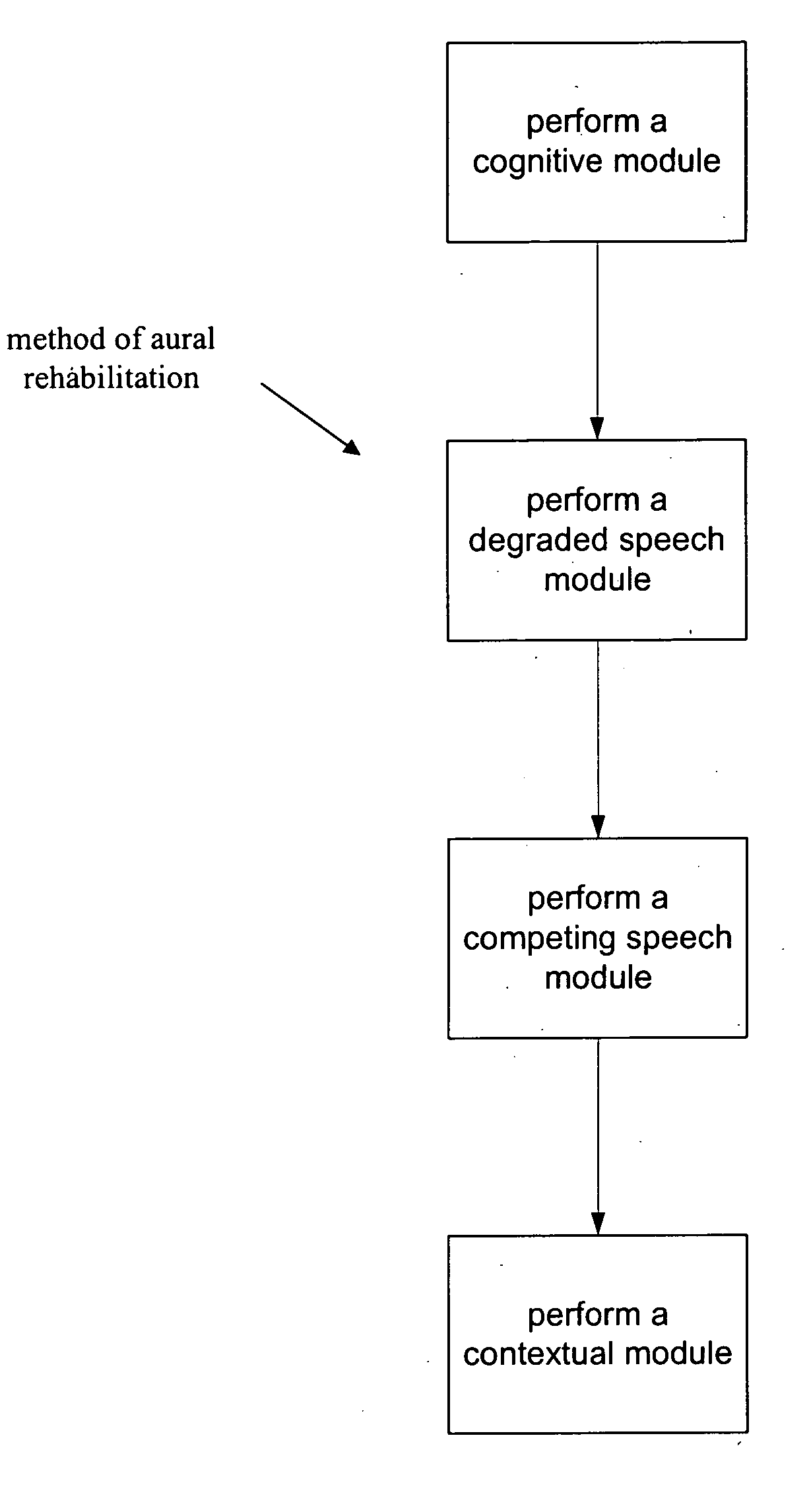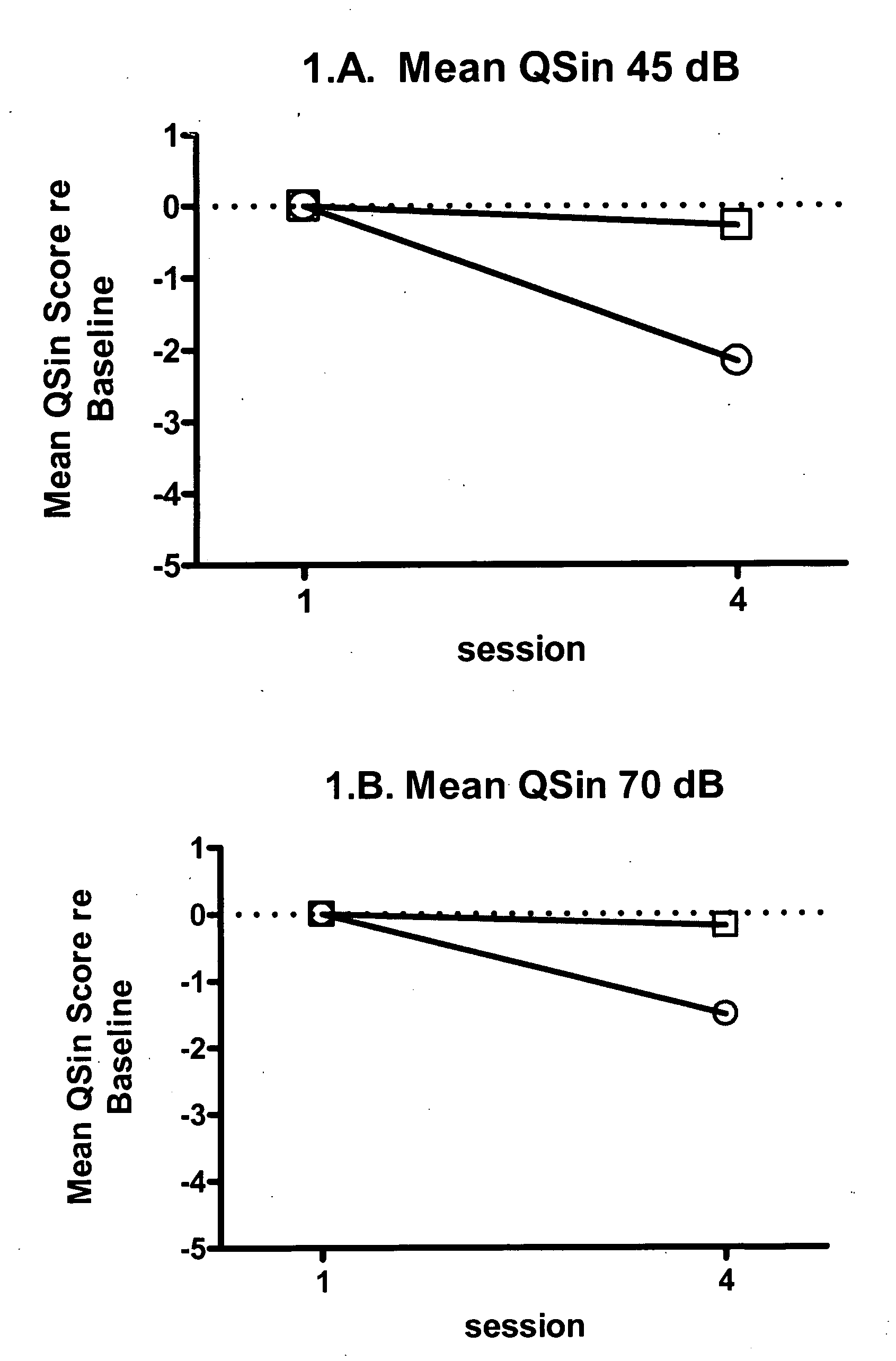Method of aural rehabilitation
a technology of aural rehabilitation and therapy, applied in the field of aural rehabilitation and/or therapy, can solve the problems of increasing age and hearing deficiencies, affecting cognitive function, contextual skills, temporal processing and interactive communication skills, and difficulty relating to the central auditory mechanism, and the average hearing-impaired adult delays getting professional services for approximately seven years
- Summary
- Abstract
- Description
- Claims
- Application Information
AI Technical Summary
Benefits of technology
Problems solved by technology
Method used
Image
Examples
Embodiment Construction
[0017] A method for neurological rehabilitation, such as aural rehabilitation, can include multiple exercise modules. Each module can be used to diagnose and / or provide treatment and / or therapy to a subject. The modules can be used as neurological training exercises. The modules can be cognitive modules, degraded speech modules, competing speech modules, context (i.e., contextual) modules, interactive communication modules, or combinations thereof. The cognitive modules can train, for example, auditory working memory and / or speed of processing. The context modules can address linguistics.
[0018] The cognitive modules, for example training auditory memory modules or working memory modules, can audibly play a series of words. The series of words can be a sentence. The subject can be asked to remember or recall an answer word in the series before a target word in the series. The subject can be asked to speak the answer word after the audible playing of the series.
[00...
PUM
 Login to View More
Login to View More Abstract
Description
Claims
Application Information
 Login to View More
Login to View More - R&D
- Intellectual Property
- Life Sciences
- Materials
- Tech Scout
- Unparalleled Data Quality
- Higher Quality Content
- 60% Fewer Hallucinations
Browse by: Latest US Patents, China's latest patents, Technical Efficacy Thesaurus, Application Domain, Technology Topic, Popular Technical Reports.
© 2025 PatSnap. All rights reserved.Legal|Privacy policy|Modern Slavery Act Transparency Statement|Sitemap|About US| Contact US: help@patsnap.com



